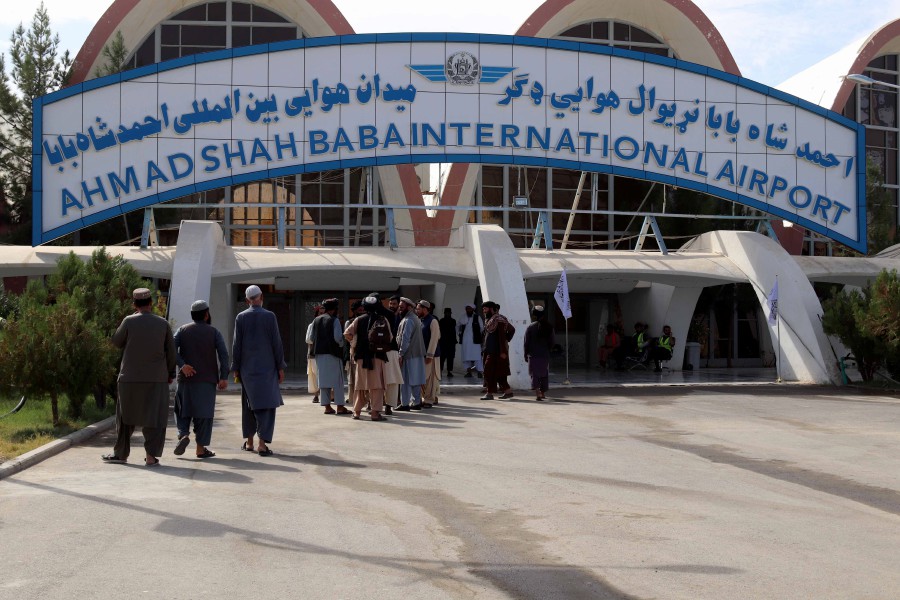THE American troops have pulled out. The North Atlantic Treaty Organisation (Nato) has pulled out. Kabul has fallen. The Taliban are back. Almost as if the past 20 years did not happen.
Except it did happen. Nearly 2,500 American troops, 1,114 Nato troops, 47,000 Afghan civilians and 66,000 Afghan security forces might still be alive today if the last two decades had not happened.
This is not to say that the United States should not have gone into Afghanistan in the first place. Neither is it to say that the US and its allies should have gone in. Recriminations, blame and regrets aside, the world is now focused on the here and now.
The United Nations says that it has 2.6 million registered Afghans on its books and predicts that more than half a million more Afghans will flee the country before year end. For a country with a population roughly the number of Malaysia's, this is a lot.
Those are the refugees outside the country. There are many more displaced within the country — those without a home or shelter, and who will find it increasingly more difficult to live in the months to come.
Nearly everyone agrees that a country under Taliban rule is a recipe for disaster. Yet this is a new Taliban; it is a Taliban that has emerged from the rubbles of yet another foreign occupation of its lands, it is a Taliban that we should assume has learnt from its past mistakes and learnt to "play ball" with the international community.
Modern "norms" should not be taken at face value to be universal. If nothing else, this recent global pandemic has taught us that there is no such thing as "beyond the realms of possibility". Who would have thought that today, people would be obliged to wear face masks, that a global pandemic would wipe out nearly five million people?
So, why should we think that an Afghanistan state would look exactly what other states look like, or like what states have looked like since 1648? There are a few reasons why an Afghan state will not look like modern-day Westphalian models.
Arguably, the only other time when Afghanistan was even relatively "stable" was between 1880 and 1901 during the reign of the Iron Emir, who ruled with such an iron fist that he was able to usher in a period of unprecedented stability. Abdur Rahman Khan's rule over Afghanistan was widely unpopular, even by international standards, but he was charismatic enough to keep invaders out of his country through force when necessary and diplomacy when required.
So we would be looking for someone who can rule the country with absolute despotism. Someone whom the international community would hate. Next comes the question of whether Afghanistan would remain in its present form.
It is a tribal land, a land with mountainous terrains and whole communities shut out from the rest of the world. It is a place where fiefdoms and breakaway factions could be king. If ever there was a country that was ill-suited to remain in unholy wedlock, present-day Afghanistan would probably be it.
But, why do we naturally assume we know what the statehood of this troubled, warring land should look like? Already we know that the Taliban will not be able to effectively rule the whole of Afghanistan, it will not be able to feed all the Afghans left behind much less develop the country without outside assistance.
Assistance, however, can take many forms and sources. Traditional donor countries have already suspended the funding for Afghanistan, but today there are many non-state actors in play. Can we, as individuals, as NGOs, as a member of the international community with a responsibility to protect others, truly afford to turn a blind eye to starving infants and undernourished toddlers?
There are countries today that survive on foreign remittances — Tajikistan, Nepal, Lesotho for example. With almost five million Afghans currently living abroad, this route would be an obvious one for a needy community within the country.
Bottom line — we should not rule out that Afghanistan under the Taliban will survive. As long as we assume that both the state of Afghanistan and the ruling power of the Taliban has evolved, and can further evolve, we need to adjust our mindset and be prepared to deal with whatever form both will take.
The Taliban narrative has already changed. The Graveyard of Empires might just prove to be fertile land for other forms of governments.
The writer is a foreign service officer, with views on international affairs



